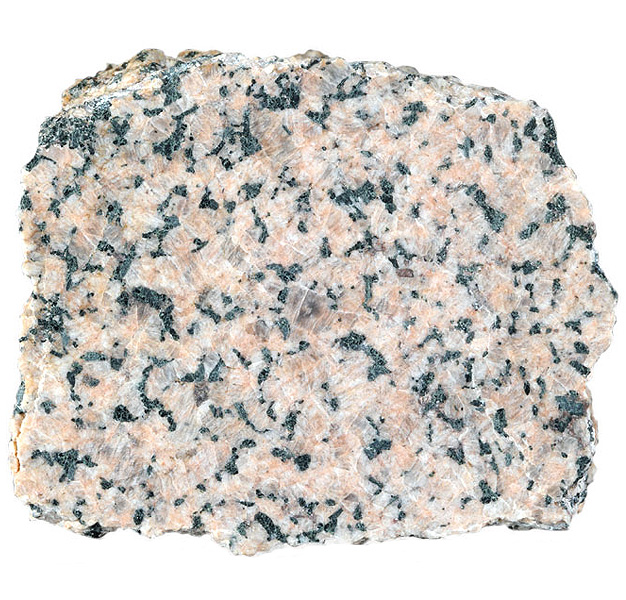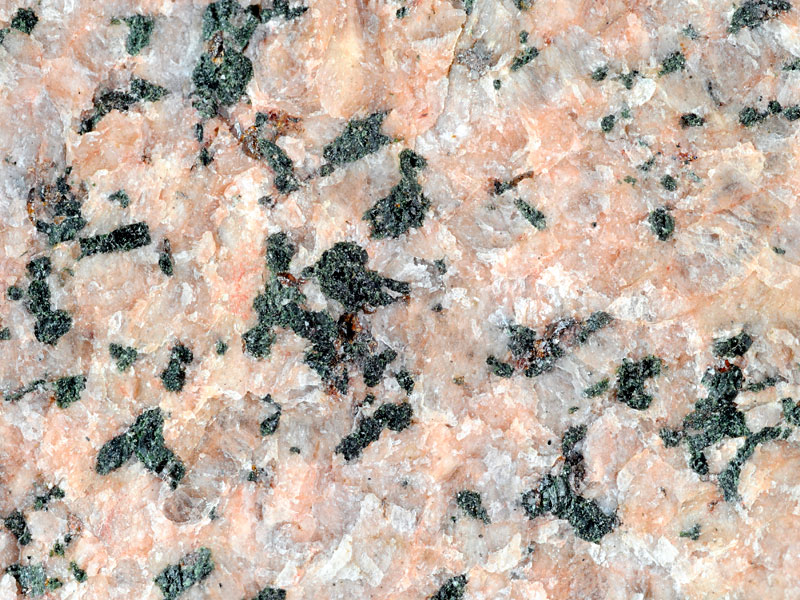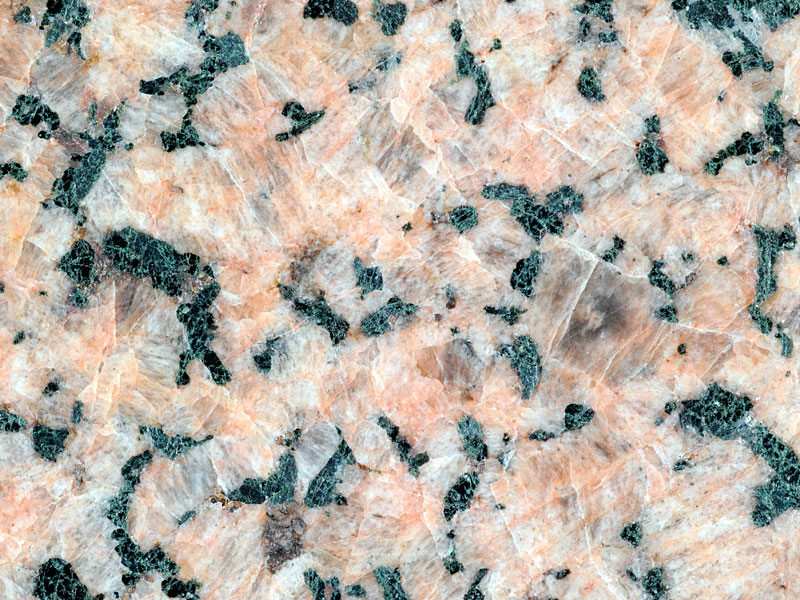
Fact sheet
The Ben Loyal syenite intrusion is one of the largest areas of alkaline igneous rocks in Britain. It was intruded around 426 million years ago after the peak of Caledonian metamorphism in rocks of the Moine and Lewisian groups in the Highland of Scotland. Intrusion of the syenite is thought to have been guided by deformed and folded country rocks to form the current body. This sample comes from the Cnoc nan Cùilean intrusion, a satellite body to the main intrusion, now separated from the main intrusion by the Loch Loyal fault, and is thought to have intruded as a series of sheets.
In thin section the most obvious constituents are green pyroxene (aegirine-augite) and colourless, cloudy orthoclase feldspar. The cloudiness is caused by exsolution of plagioclase feldspar from the orthoclase as the crystals cooled and re-equilibrated. Well-formed (euhedral) crystals of titanite are relatively common, and elsewhere in the sample accessory amounts of actinolite, allanite-(Ce), fluorapatite, ilmenite, magnetite and zircon also occur.
The United Kingdom Virtual Microscope (UKVM) collection consists of igneous, sedimentary and metamorphic rocks from around the UK.
It is intended as a teaching resource, helping to tell the story of the common rock types and how they form, and reflecting the history of the UK at the margins of the continent of Europe. The collection is a series of teaching sets, for example igneous rocks from the North Atlantic Igneous Province and SW England; high-temperature metamorphic rocks from Scotland and low-temperature metamorphic rocks from Wales; and sedimentary rocks, including English limestones and sandstones.








